Modern mortars. Part of 1
The 60-mm mortar complex M224 LWCMS is carried by a calculation of four people. This is a regular armament of army infantry and marine corps intended for fire support of small maneuverable subunits of high-explosive, lighting and smoke mines.
Mortars are part of the field artillery. They are intended for mounted shooting at concealed targets, as well as for destroying field fortifications and differ from cannons firing at targets at direct low level trajectory and howitzers, which usually fire at concealed targets that are not visible from the position of attack, along the attached trajectory .
The mortar shoots its ammunition (mine) along a high trajectory, which allows you to hit targets behind hills, on narrow streets, in ravines and trenches; The latest combat quality made it particularly useful in the First World War trench warfare. A mortar can be a very simple system: just throw a projectile into the barrel and shoot as fast as a soldier can throw projectiles at the barrel (20 shots per minute; it is quite possible to throw every three seconds). Plus, mortar systems can be transferred by force of calculation, a light mortar can weigh up to 23 kg and even ready-to-fire heavy towed mortars weigh 150 kg, which is not in favor of, for example, the M155 777-mm howitzer from BAE Systems, which weighs 4200 kg. In addition, the range of light mortars can reach 3,5 km, and the newest heavy systems 10 km.
The mortar appeared as siege weapons, which could shoot over the fortress walls in order to destroy the guns and destroy the structures behind them. After the reappearance of mortars in World War I, this class of artillery became widespread during World War II, where it played an extremely important, though often underestimated, role in many combat episodes. For example, the doctrine of the Wehrmacht considered mortars as the primary means of fire support for infantry, while the “barrel” artillery was reserved for “main attacks”. The mortar took place as a “pocket” artillery of a small unit - a role that it continues to play in a broad sense today.
Modern mortars are divided into three categories: light mortars (usually 60 mm) used at the platoon and company level, medium mortars (81 mm for Western models or 82 mm for Russian and Chinese), used at the company or battalion level, and 120-mm battalion level mortars, also used in artillery units. The tendency is that the dismounted infantry at the battalion level is armed with 81-mm mortars, whereas mechanized units usually have 120-mm mortars mounted on vehicles. Modern mortars are lighter, shoot farther, have greater accuracy and damaging ability than those systems that were deployed even 15 years ago. All this is due to the widespread use of new alloys and composite materials in the manufacture of mortar barrels and base plates, automation and digitization of fire control and progress in fuses and mortar ammunition. These innovations have increased the capabilities of the mortar in the performance of direct fire support tasks, despite the changing dynamics of ground combat, with its large extent, diverse operations and asymmetry. The obvious conclusion is that under these conditions the value of the mortar as a weapon system, as well as its contribution to the outcome of the battle, increases for the combat commander.
High mobility is one of the main tactical advantages of the Stryker mechanized units of the US Army. The ability to immediately return fire indirectly is critical to preserve the maneuverability advantages of these units.
Light mortars
What kind of armament is most suitable as standard for a unit of a particular level is determined by two main factors. First, how does it fit into the combat obligations of a unit of this level? In particular, does it correspond to the interests and range of tasks? Second, is it compatible with the ability of the units to deploy the system, that is, can they move and maintain it? Although the advantage of owning weapons longer range is obvious, but if too many soldiers are needed to carry it or its components, this may be impractical. The difficulty of moving a heavy system and providing enough ammunition can negate the value of the increased range. It is necessary to achieve balance. Most armies in the world agree that the 60-mm mortar is the best choice for a company of light infantry. The US Army’s FM7-90 mortar combat guide says: “The advantage of the 60-mm mortar ... lies in its immediate response to the orders of the company commander and the speed with which he can take action.”
The US Army and Marine Corps are armed with a lightweight mortar system M224 LWCMS (Lightweight Company Mortar System) with a real fire range from 70 meters to 3500 meters. The minimum range of the weapon is as important as the maximum, because it determines how close it is in front of its own forces to fire. This may be critical for disrupting an attack that threatens to “overwhelm” its positions, or to deter an opponent trying to cling to the positions of the Allied forces and avoid returning artillery fire. The M224 mortar and its 20 percent-lightened version of the M224A1 is available from General Dynamics Ordnance and Tactical Systems (GDOTS). This family of mortars firing high-explosive, smoke (white and red phosphorus), lighting (visible and infrared spectrum) and practical mines. In turn, Saab offers its M1061 MAPAM (Multi-Purpose Anti-Personnel Anti-Materiel - a multipurpose, anti-personnel, anti-materiel) mortar ammunition that can be used with the M224 / A1 mortar and shoot at a smaller distance from its forces thanks to controlled scattering fragments; in addition, it is able to penetrate the most vulnerable spot of the armored vehicle - the roof, and with a delay detonate inside it.
Another lightweight infantry 60-mm mortar under the designation M6 Mortar produces the Austrian company Hirtenberger. In addition to the Austrian army, it was adopted by the British Army and Marine Corps under the designation M6-895 (895 barrel length in mm), the maximum range of which is 3800 meters. In the case of the British, the previous concept was completely changed, according to which the light mortar was excluded in favor of a hand grenade launcher. However, the combat experience during the UK invasion of Afghanistan in the 2001 – 2013 years made it possible to evaluate the advantages of a light mortar, which made it necessary to reconsider plans to replace it. A tripod-mounted automatic grenade launcher (AH) is also sometimes considered a substitute for a lightweight mortar. However, the characteristics of the trajectory of the projectile in AG are closer to the mounted fire of the howitzer. In the case of AH, this makes it difficult to shoot backward slopes. In addition, they do not have such a diverse range of ammunition.
Mortar M6 Mortar of the Austrian company Hirtenberger
One of the features of 60-mm mortar is that, although greater accuracy and range is achieved when installed on a bipod and using a mechanism for horizontal and vertical guidance, it allows you to visually aim and fire with your hands and thus quickly hit targets. Taking into account this aspect, DSG Technology has developed the iMortar ultra-light 60-mm mortar for small units. With a weight of 5,5 kg and a length of 900 mm with an integrated aiming system, it is well suited for a small battle group, as also indicated by its small long range 1,2 km.
Ultralight 60-mm iMortar mortar
The American army adopted the 120-mm smoothbore mortar Elbit Soltam, which in the land version with a bipod received the designation M120; this mortar is used at battalion level
Towed 120-mm heavy mortars were adopted by the US Marine Corps, because they can be easily transferred by helicopter. The EFSS self-propelled expeditionary fire support complex includes 120-mm TDA rifled mortar and Growler light tractor.
Medium mortars
The 81 mm caliber (actually, the 81,4 mm) is most common in the Western armies, while the 82 mm caliber is typical of Russian and Chinese weapons. Although 82-mm mortars were spread in the Soviet army during World War II, they were subsequently replaced by 120-mm mortars in most units. The exception was the transportable and towed and self-propelled smooth-bore 2B9 “Cornflower” caliber 82 mm on a wheeled chassis, put into service in the 1970 year and used during the Afghan war in the 1979 – 1989 years. He is also still in service with the Russian Airborne Forces. Unlike traditional mortars, this mortar fires either with single shots or in automatic mode using four-round shops. The range of a mortar capable of firing high-explosive, smoke, lighting and armor-piercing projectiles is 4270 meters. The Chinese army is armed with Type 67, a modernized Soviet regimental mortar PM-41, which was put into service in 1941 year. This mortar was widely used in the Vietnam War.
2B9 "Cornflower" smoothbore 82 caliber mm
In the United States, advanced technologies have improved their 81-mm mortars, among which the newest is the M252 model weighing 42,3 kg. It is the standard weapon of the battalion level of the army units of the light infantry, and is also adopted by the marine corps. This 81-mm mortar was also installed on the upgraded version of the M113 armored personnel carrier, designated M125; shooting from a mortar was conducted through the open hatch on the roof of the hull. It is also installed on the LAV-M Mortar Marine Corps and transported in a M1129 Styker mortar conveyor (the main weapon is an 120-mm mortar), where it is removed from the vehicle for firing. M252 has a range of 5608 meters when firing all types of 81-mm ammunition.
The Mo 81 LLR mortar (Leger Long Renforce - light long fortified) developed by the French company Thales is in service with the French and Irish armies and is offered with a shortened 1,1 meter trunk (Leger Couf) and an elongated 1,5 meter trunk (Leger long). The standard range is 3100 meters, but when fired with mines of increased range, it rises to 5600 meters. The French company Nexter delivers mortar ammunition through its subsidiary company Mecar, which produces several types, such as 155-mm MPM (Metric Precision Munition - meter precision) with a maximum range of 40 km. Nexter has also developed and prepared for the production on the basis of its combat armored vehicle VBCI (Trafficule Blinde de Combat d'Infanterie) 120-mm mobile mortar complex, which has been ordered but not yet purchased by the French army.
Mortar Mo 81 LLR manufactured by the French company Thales
All 81-mm projectiles are feathered (with stabilizing planes), and the most common type is high-explosive. The adoption of multi-mode fuses for high-explosive fragmentation mines allows the calculation just before firing easy to choose the mode of detonation of the projectile. Such fuses, such as M734, can be installed in several modes: shock, with a delay (allows you to pierce the roof or cover) or remote (undermining in the air over the target with the scattering of fragments over a large area). For example, a temporary fuse of the lighting mine is installed so that in the case descending over the target on the parachute the lighting mixture ignites and burns for 50-60 seconds with the brightness of the 525000 candles. The lighting composition can be equipped either to create a backlight in the visible range, or in the infrared. Smoke shells are filled with granules of red phosphorus, which are ignited in order to obtain a thick smoke screen. Another filler of mortar shells - white phosphorus - instantly forms a smoke screen, impairing visibility in the visible and infrared spectrum. It burns violently and can cause burns, but thanks to its instantaneous action it is ideal for labeling purposes.
The Elbit mortar complex SPEAR of the recoil force when shooting is quite small, which allows you to install it on light tactical vehicles. The system installed on the pickup has already been tested by US special forces in Afghanistan
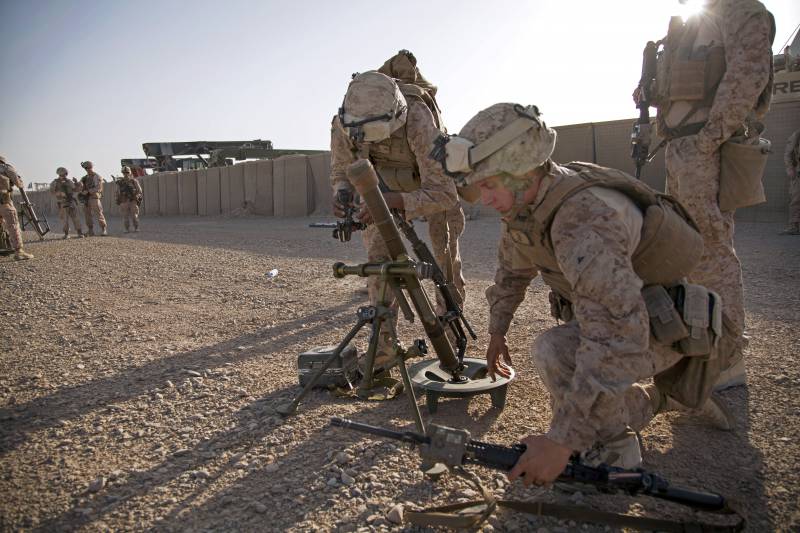
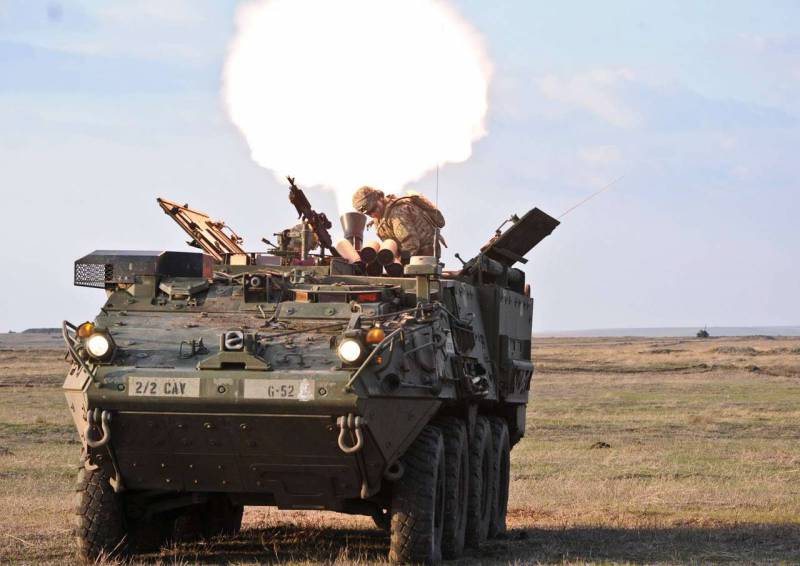
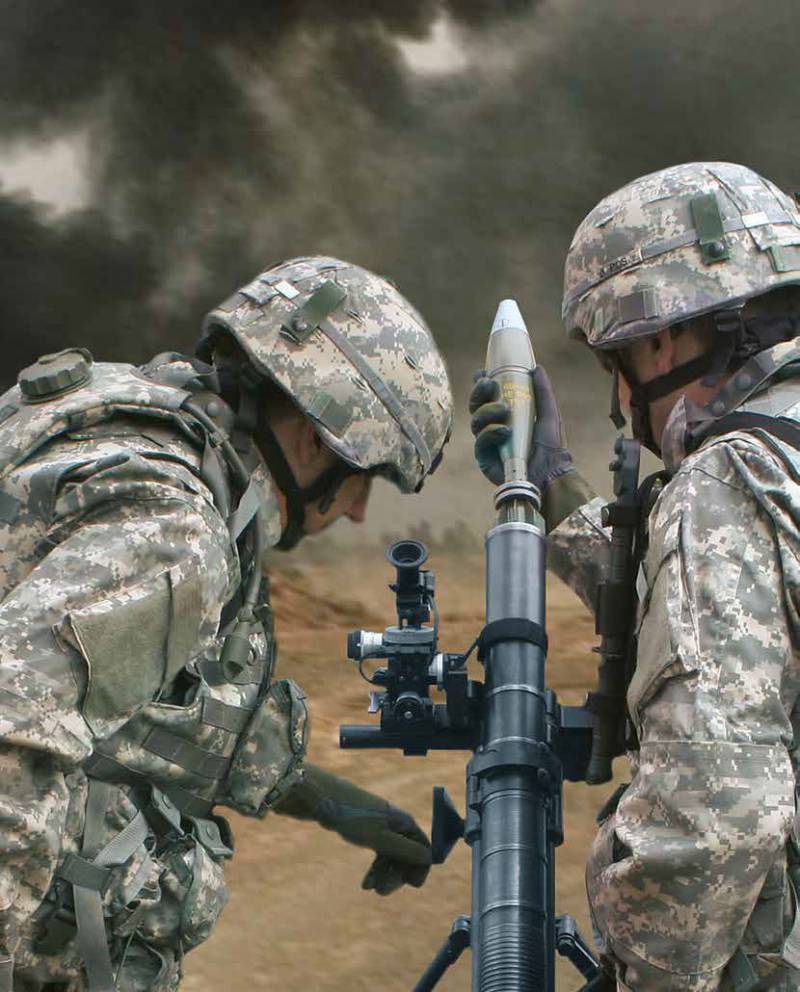
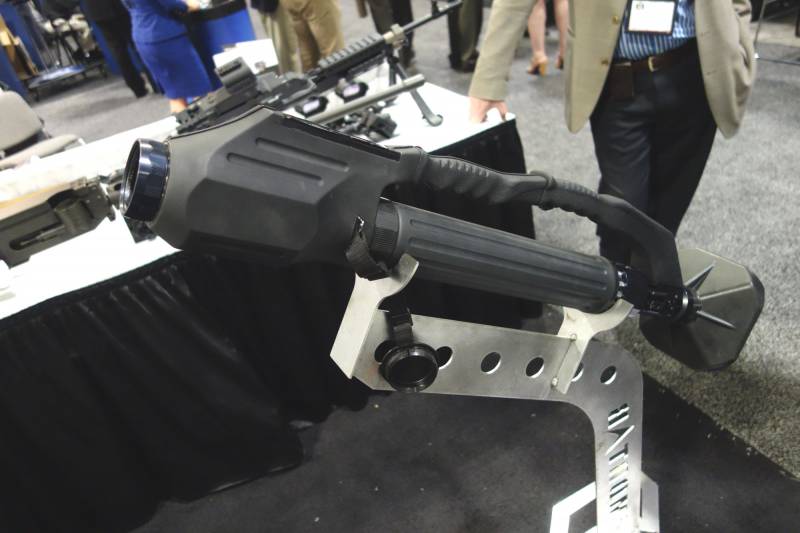
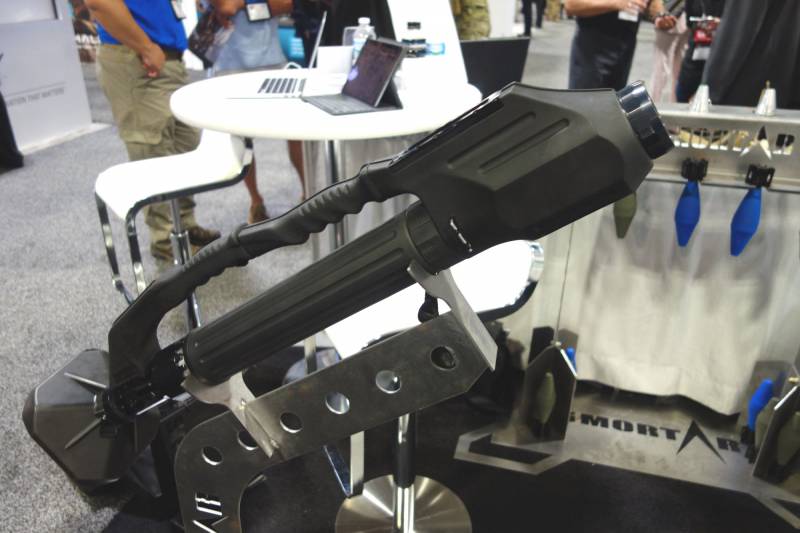
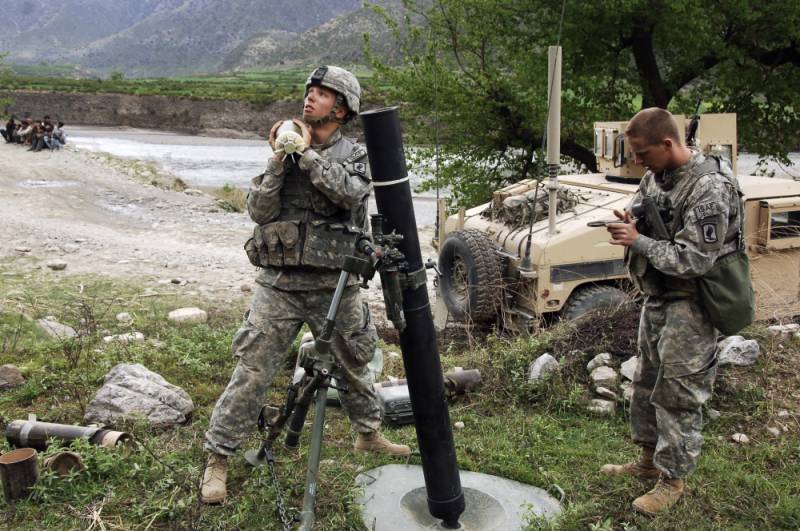
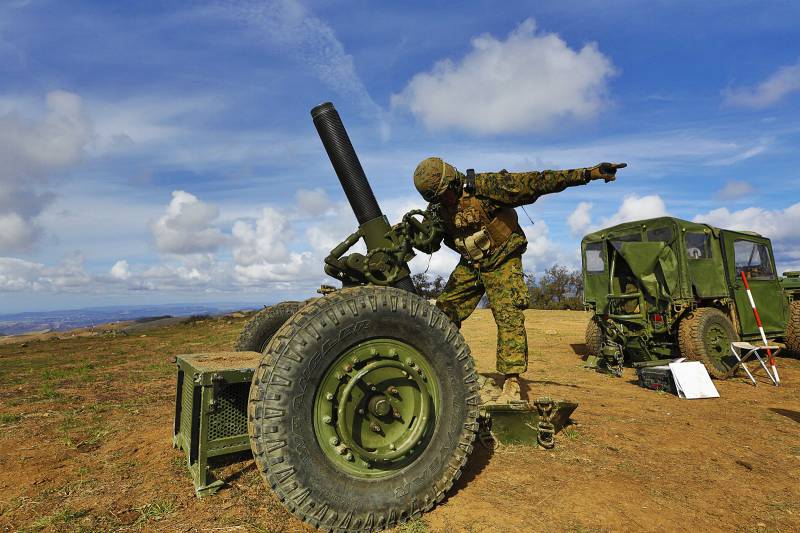
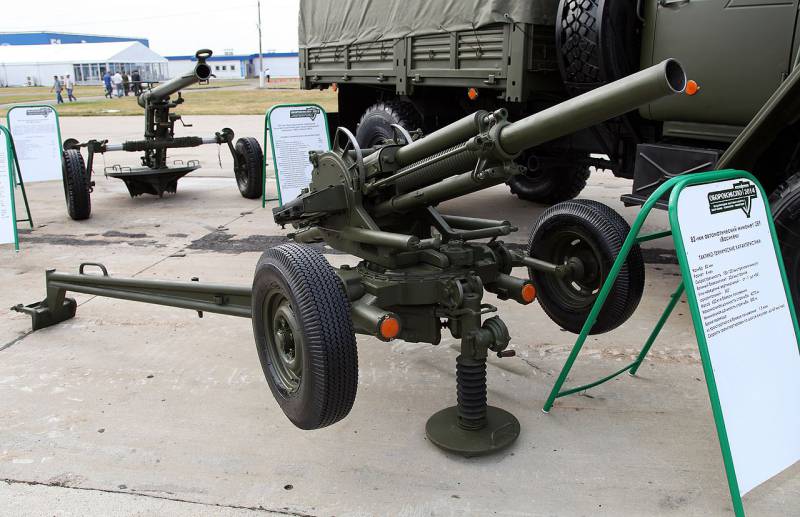

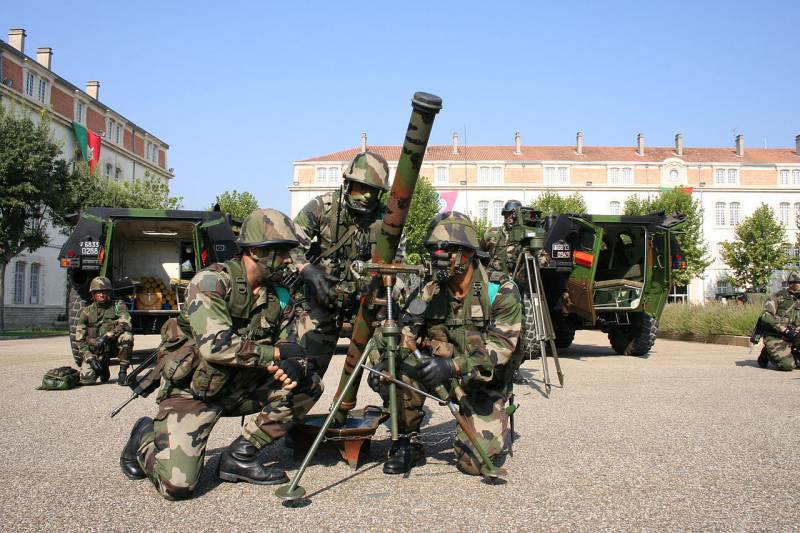
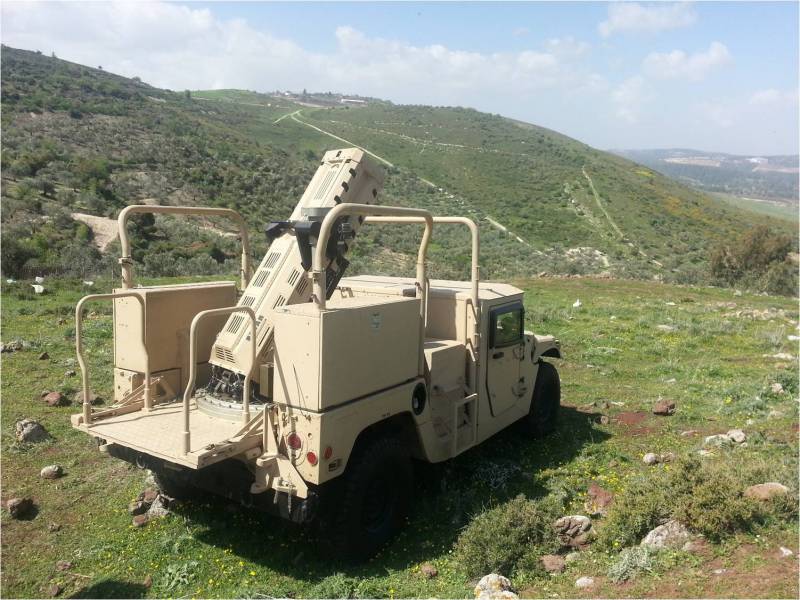
Information